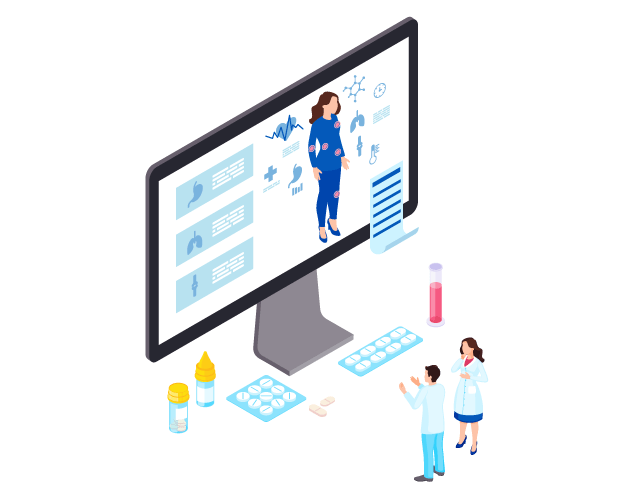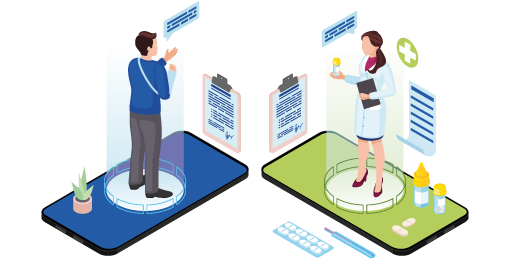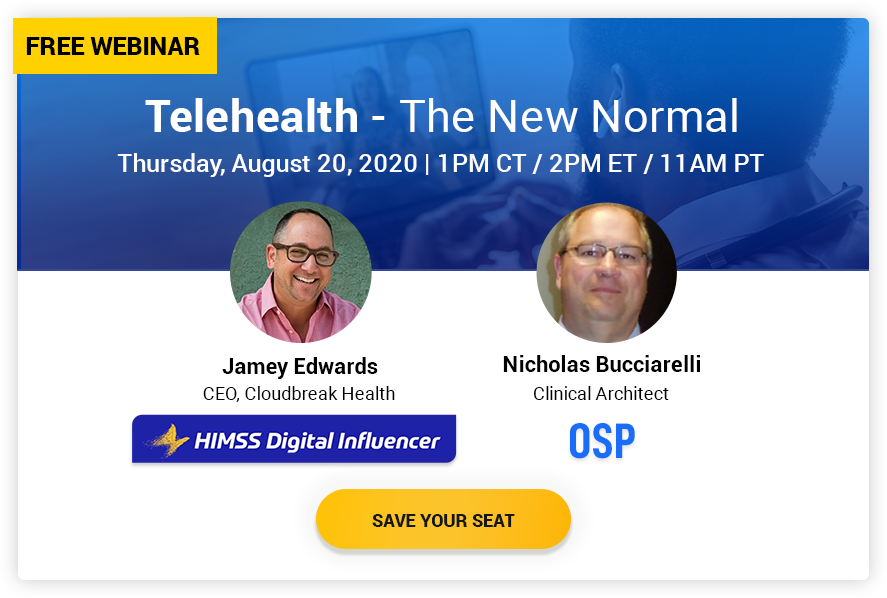Introduction
Telehealth solutions are now the calling of the future of healthcare. It is one innovation that can increase accessibility to caregiving, improve care quality, and decrease healthcare costs. With an estimated saving of $186 million, over the next decade, healthcare companies are now taking a keen interest in innovations with telehealth solutions. There are ten steps to successful implementation for organizations that are considering adopting telemedicine software solutions.
Step 1 – Undertake Research on System Capacity

The first order of business is to gauge the community’s needs and the patients related to the organization. Telemedicine software solutions should be identified based on these needs. Devising solutions based on the needs of the community around is the foundation to ensure success. Methods of direct communication with patients, data analysis, feedback forms, etc., will aid in determination. For example, in an organization where critically ill patients experience poor outcomes, a telehealth service can address their needs. Finally, consider the organization’s system capacity for intelligent decision-making.
Step 2- Analyze Requirements to Avoid Burnouts

The next step is to undertake an analysis of the organization’s capacity and need. Can it address the community need through the organizational capacity? The answer to this question can help identify the type of telemedicine solutions. This includes the strengths of the company, along with an identification of the gaps. For example, if telemedicine solutions are being deployed in a specialist area, it would be prudent to ensure the availability of specialist care-givers within the system—Focus advanced telehealth solutions on the community, individual capacity, and the Return on Investment. Holistically make decisions. Readiness assessments for advanced telehealth solutions should involve stakeholders and staff alike.
Step 3 – Identify Goals and Cut Fixed Costs

Align telemedicine software platforms with the organization’s goal and mission. Healthcare companies should look at eliminating fixed costs as far as possible while developing telemedicine software platforms. This will aid in creating strategic value toward the deployment while achieving goals. In a nutshell, the organization should be crystal clear on the purpose of implementation. For example, if the aim is to better manage the pharmaceutical division, then a telemedicine pharmacy solution should be the answer. Analyze the telemedicine pharmacy solutions to address the need of that division, which could be reducing fixed costs, increasing regularity, etc.
Step 4 – Implementation with Humans as Priority
Integrated telehealth solutions should be deployed with the priority to keep the patients, physicians, and organizational staff at the center of decision-making. A clear timeline toward implementation can make the process seamless. Additionally, critical stages of the project can be identified and monitored to align with implementation timelines. Timelines should be made in a realistic fashion, considering the organizational size and capacity and the type of integrated telehealth solutions. Other factors for consideration include time taken to troubleshoot and test, practice sessions, etc.
Step 5 – Merge Telehealth into Mainstream Processes

This is a crucial element to success. Beginning with the executive leadership, the telehealth strategy has to be prioritized across the organization. From physicians to administrative staff, every involvement will assist in merging the telehealth solution into the organization’s mainstream processes. Administrative support is integral to patient engagement in healthcare through accessibility. Furthermore, physician buy-in is another critical factor for success. When the mainstream process reflects the telehealth processes, patient engagement in healthcare is more likely. For example, appointment scheduling should merge to offer a combination of virtual as well as physical visits.
Step 6 – Create an Execution Team

At the outset, a clear vision should include the appointment of organizational champions that will be in charge of the deployment process. This will be the team that will look into the smooth enablement of the innovation from deployment to execution. Apart from the vendor, this team should be members of the healthcare organization. Ideally, the team should be a mix of staff, physicians, and stakeholders who can each offer unique insights into the process. For example, if mobile telehealth solutions are being developed, the team can provide logistical contributions, the physician can give suggestions to improve care quality, and the stakeholders can give finance-related viewpoints toward mobile telehealth solutions.
Step 7 – Enable Virtual Training Programs

After deploying mobile telehealth solutions, the training of every organizational entity involved is essential. Integration should go hand in hand with training for HIPAA compliant telemedicine solutions. Adopt real-time telehealth solutions for hands-on practice. For example, real-time telehealth solutions’ audio and video components should be used for practice. Internal meetings and conferences can be planned to increase familiarity with technology and reduce hesitation.
Step 8 – Invest in Marketing
When it comes to remote health monitoring, the concept is relatively new among the community at large. Even though it is being embraced as the future of healthcare, population education is still prevalent. A good deployment strategy, thus, must factor in need for marketing. This will increase awareness of the advantages of remote health monitoring. For example, an innovative telehealth solution in pediatrics should be marketed to the community of parents. It will then assist in attracting a higher number of patients due to its distinct advantage. A solid investment plan for marketing must not be neglected.
Step 9 – Integrate the Old and New
Patient engagement systems can be started on a small scale and gradually increased for seamless adaptation. This method allows for natural integration between old systems and new innovations. For example, a hospital can begin with automated appointment scheduling and slowly ramp it up to virtual visits. Technology can slowly be introduced within patient engagement systems, to offer higher levels of telemedicine services. In this manner, gaps can be easily identified and mitigated in a timely fashion. Remote patient monitoring solutions have a higher chance of success when undertaken in a phase-wise manner that merges old systems with new.
Step 10 – Explore Innovative Additions

Remote patient monitoring solutions can always be accentuated with additions. As deployment and implementation are underway, patient engagement solutions can be analyzed to identify more opportunities for innovations. Let us consider a patient engagement solution that offers at-home services to the critically-ill by monitoring their vitals. Through further changes in remote patient monitoring, organizations can install medication reminders, fitness goals, diet plans, etc. The opportunities in telemedicine technologies are endless.
Conclusion
Telehealth and remote patient monitoring are a broad technology category with plenty of innovative offerings. Many healthcare opportunities can be explored in this domain, from the management of critically ill patients to clinical workflows. A smart deployment strategy can prove instrumental in successful implementation and take the healthcare organization from strength to strength. Follow the steps above for practical, rapid, and cost-effective technology adoption and increase organizational value.
OSP is a trusted software development company that delivers bespoke solutions as per your business needs. Connect with us to hire the best talents in the industry to build enterprise-grade software.

How can we help?
Fill out the short form below or call us at (888) 846-5382
Looking for software solutions to build your product?
Let's discuss your software solutions for your product in our free development acceleration call!
Get In Touch arrow_forwardDiscuss Your Project Handover with a team of expert Book a free consultation arrow_forward
About Author

Written by Riken Shah linkedin
Riken's work motto is to help healthcare providers use technological advancements to make healthcare easily accessible to all stakeholders, from providers to patients. Under his leadership and guidance, OSP Labs has successfully developed over 600 customized software solutions for 200+ healthcare clients across continents.


















